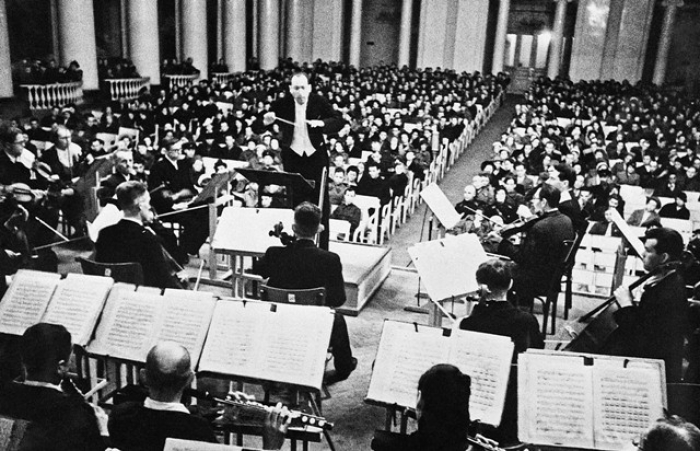Dmitri Shostakovich, a Russian composer, and pianist was one of the significant influences in classical music. He had a unique harmonic style and was especially noted for his role in history under Stalin’s regime. But did you ever wonder why Shostakovich’s 7th Symphony was named after an old city in Russia?
In 1942, the Soviet Union launched an attack to stop German guns so that Shostakovich’s 7th Symphony could premiere in Leningrad (St. Petersburg). Even tho the city was under attack and the musicians were practically starving and dying, but the show went on.
Who is Dmitri Shostakovich?
On September 25, 1906, Dmitri Shostakovich was born in a quiet street in Saint Petersburg, Russia. He was one of the three children of Boleslavovich Shostakovich and Sofiya Vasilievna Kokoulina. Shostakovich’s father studied mathematics and physics at Saint Petersburg University. After graduating in 1899, he went to work with Dmitri Mendeleev. Shostakovich’s parents married in 1903 and started their family shortly after.
At a young age, Shostakovich showed a lot of musical talent. He began piano lessons with his mother at the age of nine. During this time, he would often display a remarkable ability to remember what his mother had played in previous days. In fact, he would be caught pretending to read notes but playing a completely different tune.
By the age of 13, Shostakovich was admitted to the Petrograd Conservatory. Back then, it was headed by the famous Alexander Glazunov, who took an interest in Shostakovich’s talent and closely monitored the young boy’s progress. Shostakovich learned from the best, piano with Leonid Nikolayev, composition with Maximilian Steinberg, fugue, and counterpoint with Nikolay Sokolov.
After graduating from the conservatory, Shostakovich started his career as a concert pianist and composer. However, his dry style was not appreciated by many. Laurel Fay, an American biographer, commented about his emotional restraint. But Shostakovich went on to win an honorable mention at the inaugural I International Chopin Piano Competition in 1927. After his win, he focused on composing. He started working on his 2nd Symphony entitled To October. A patriotic peace dedicated to Soviet Russia.
Shostakovich lived a very fulfilling life. He composed the music for the Russian version of the film Hamlet. This was highly approved by the New York Times
But the lack of this aural stimulation—of Shakespeare’s eloquent words—is recompensed in some measure by a splendid and stirring musical score by Dmitri Shostakovich. This has great dignity and depth, and at times an appropriate wildness or becoming levity.
New York Times
(Souce: Chicago Tribune)
Shostakovich’s 7th Symphony
Shostakovich completed the 7th Symphony on December 27, 1941. He dedicated this piece to his hometown Leningrad (St. Petersburg). At the time of its completion, the city was under siege by Nazi Germany. Shostakovich wanted the Leningrad Philharmonic Orchestra to premiere the symphony, but the group had been evacuated to Novosibirsk because of the attacks. The Leningrad Radio Orchestra was the only ensemble available to play.
Since the city was a war zone, the musicians were having a hard time rehearsing. They kept a rehearsal logbook, some entries read; Rehearsal did not take place. Srabian is dead. Petrov is sick, Borishev is dead. The orchestra is not working. The ensemble started with 40 members. By the time of their performance, only 15 were there to play. The other members died, starved, or went to fight in the war.
On April 2, 1942, the Leningrad City Arts Department announced the preparations for the performance. Shostakovich required a 100-member ensemble. But due to the unfortunate circumstances, they continued with the remaining personnel. (Source: BBC)
